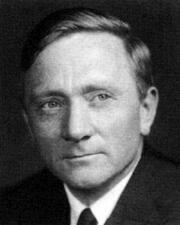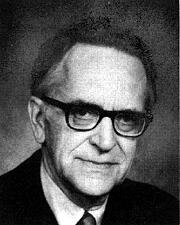
April 26
The Right to Privacy

Estelle Griswold and Cornelia Jahncke of Planned Parenthood League of Connecticut
| While civil rights activists struggled in the judicial environment that followed the Warren Court, their counterparts in the feminist movement--at least initially--enjoyed better results. There are many ways to focus a segment on feminism and the law: examining the battle over the Equal Rights Amendment; the development of Title IX; or the rise of sexual harrassment law. But perhaps the best way to examine the complex relatioship between feminism and the law comes with the question of whether the right to an abortion is protected by the Constitution. And so today's class will focus on the Griswold decision, which established the right to privacy. |
Federal abortion law centers around four main issues:
As David Garrow observes in Liberty and Sexuality--the most comprehensive study of the legal aspects of the pro-choice movement and the SOURCEBOOK assignment--abortion rights activists rapidly concluded that the judicial rather than the political arena represented their most promising route for success. After several setbacks, they scored their first important victory in the 1965 case Griswold v. Connecticut [or take a look at the oral argument]. Please read both. In striking down (7-2) a Connecticut law banning the distribution and use of contraceptives, the majority opinion written by Justice William O. Douglas, held that certain rights, though fundamental and not actually written in the Bill of Rights or the 14th amendment, nonetheless existed in the Constitution. Douglas wrote that the fundamental right to marital privacy lay between the gaps of the 1st, 3d, 4th, 5th, and 9th amendments. Other Justices searched elsewhere in the Constitution to justify what became the "right to privacy." This legal reason proved to be among the most controversial in the Court's history--critics attacked it as the perfect example of an activist Court.
| Specific guarantees in the Bill of Rights have penumbras, formed by emanations from those guarantees that help give them life and substance. ... Various guarantees create zones of privacy. The right of association contained in the penumbra of the First Amendment is one, as we have seen. The Third Amendment in its prohibition against the quartering of soldiers "in any house" in time of peace without the consent of the owner is another facet of that privacy. The Fourth Amendment explicitly affirms the "right of the people to be secure in their persons, houses, papers, and effects, against unreasonable searches and seizures." The Fifth Amendment in its Self-Incrimination Clause enables the citizen to create a zone of privacy which government may not force him to surrender to his detriment. The Ninth Amendment provides: "The enumeration in the Constitution, of certain rights, shall not be construed to deny or disparage others retained by the people." |  --William O. Douglas, Griswold v. Connecticut |
Griwsold established the ideological basis on which later abortion rights decisions were based. But there were two other important points in the development: Eisenstadt v. Baird (1972) invalidated a Massachusetts statute making it a crime for anyone to distribute contraceptives other than doctors and pharmacists prescribing them to married persons. Going beyond Griswold's findinds, Justice William Brennan, speaking for a four-vote plurality, held, "If the right of privacy means anything, it is the right of the individual, married or single, to be free from unwarranted government intrusion into matters so fundamentally affecting a person as the decision whether to bear or beget a child"; and, of course, Roe v. Wade (1973), which voided the abortion laws of nearly every state. Striking down a Texas statute that prohibited all abortions except to save the mother's life, a 7-2 majority of the Supreme Court held that abortion was a constitutional right that the states could only abridge after the first six months of pregnancy. More specifically, the Court held that the right to privacy included the right to abortion and the word "person" in the 14th amendment did not apply to the unborn.
| This right of privacy, whether it
be founded in the Fourteenth Amendment's concept of personal liberty and restrictions upon state action, as we feel it is, or, as the District Court determined, in the Ninth Amendment's reservation of rights to the people, is broad enough to encompass a woman's decision whether or not to terminate her pregnancy . . . We, therefore, conclude that the right of personal privacy includes the abortion decision, but that this right is not unqualified and must be considered against important state interests in regulation. |
 --Harry Blackmun, Roe v. Wade |
But, like the civil rights movement, the pro-choice movement soon came under strong attack, coordinated by the Catholic Church and by newly energized social conservatives in the Republican Party. By 1989, it appeared as if the Court might overturn Roe. It did not, but, in the two decisions below, it came very close.
The Challenges: Webster, Casey
Webster v. Reproductive Health Services (1989) In the first key departure from Roe, a 5-4 Court majority upheld a Missouri statute stating that human life began at conception, barring use of state property for abortions, and requiring viability tests for advanced pregnancies. But, because Justice Sandra Day O'Connor declined to join the plurality opinion, the case did not explicitly overturn Roe, although both sides in the abortion debate expected that the Court soon would do so.
Planned Parenthood v. Casey (1992) A Court sharply divided into three factions upheld a Pennsylvania law that contained a 24-hour waiting period provision for an abortion, an informed consent requirement, a parental consent provision for minors, and a recordkeeping requirement. But the majority also invoked the principle of stare decisis, the political need for judicial credibility and a consistent constitutional vision, to go on record against overturning Roe.
![]()